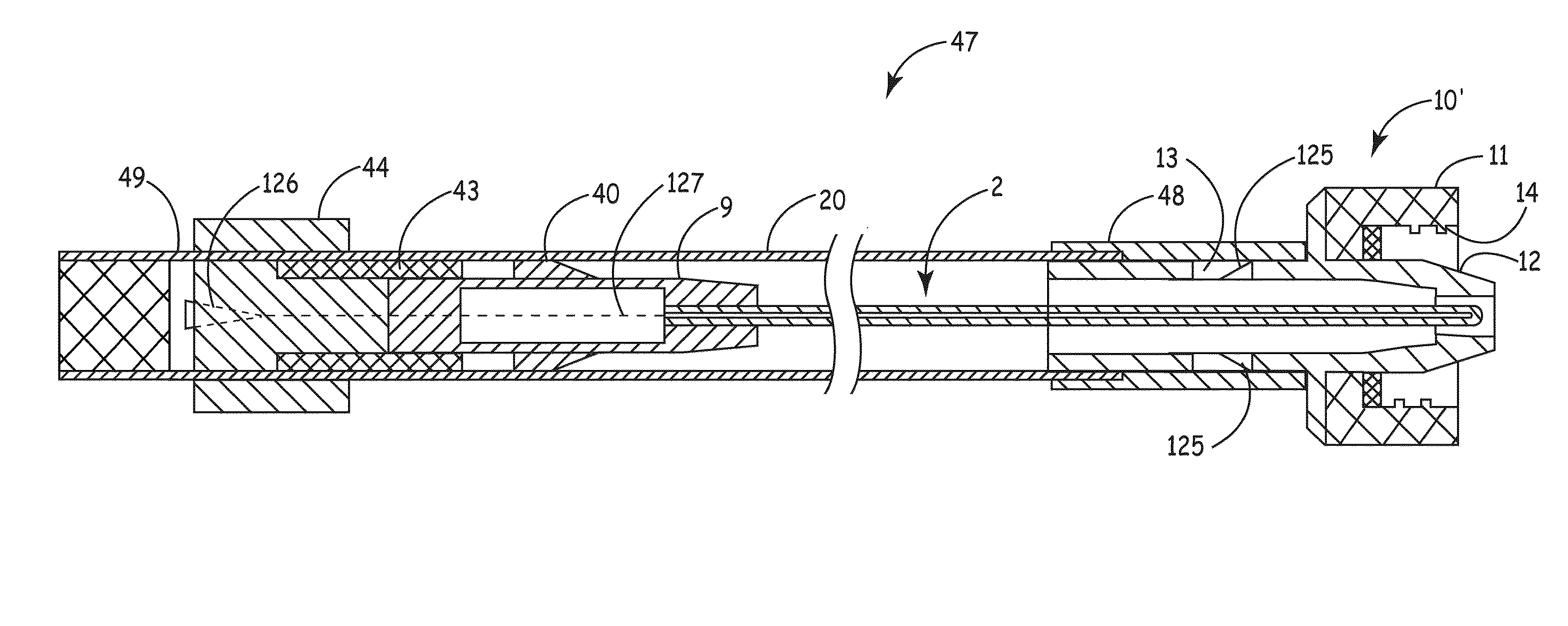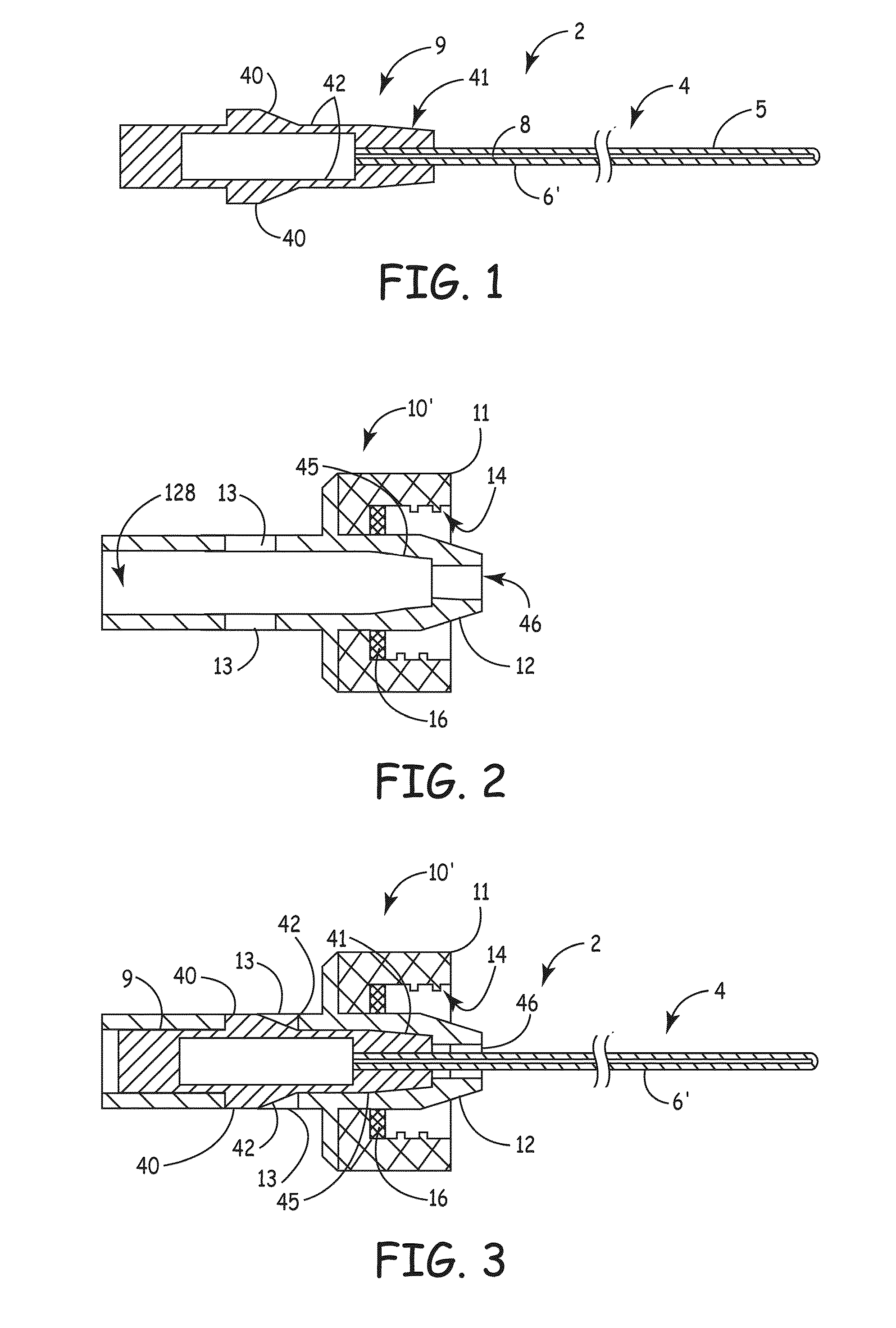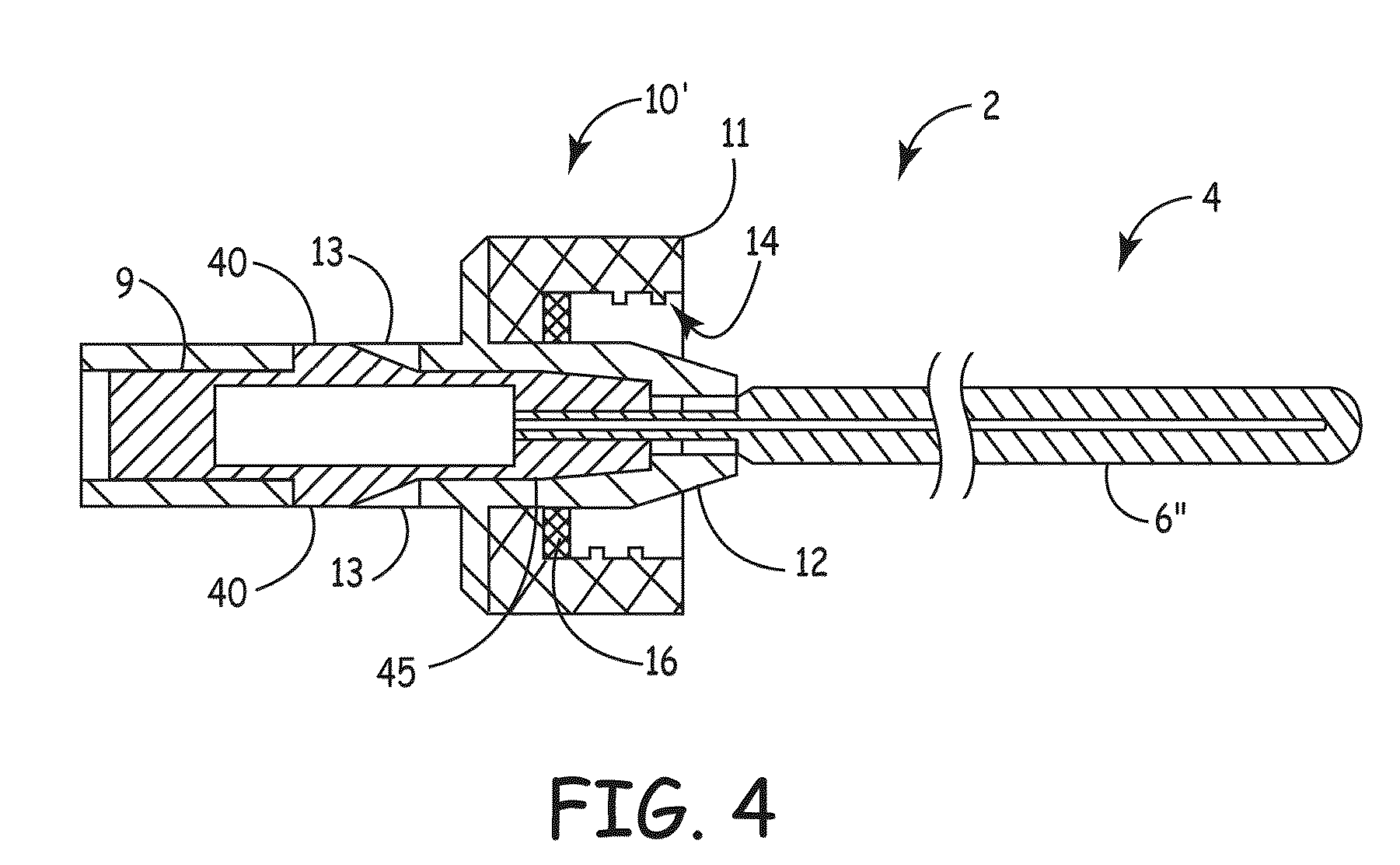Apparatus for delivery of device and antimicrobial agent into trans-dermal catheter
a technology of antimicrobial agent and catheter, which is applied in the field of medical devices, can solve the problems of high mortality rate, high risk of infection, and contamination of medical devices such as catheters and drainage tubes by infectious organisms, and achieve the effects of reducing infection risk, reducing side effects, and reducing infection ra
- Summary
- Abstract
- Description
- Claims
- Application Information
AI Technical Summary
Benefits of technology
Problems solved by technology
Method used
Image
Examples
Embodiment Construction
[0059]The following detailed description of example embodiments presents a description of certain specific embodiments to assist in understanding the claims. However, one may practice the present invention in a multitude of different embodiments as defined and covered by the claims.
Elongate Member for Insertion into a Catheter
[0060]In an example embodiment, the invention is a system for delivering an antimicrobial agent into the lumen of a trans-dermal catheter, the system comprising: an elongate member configured for insertion into a lumen of a catheter; an expandable portion of the elongate member, said expandable portion configured to increase in diameter upon exposure to an aqueous fluid; and an antimicrobial composition positioned to be delivered into the catheter.
[0061]Referring now to the figures, example implementations of the invention are shown. Referring to FIG. 1, the elongate member 2 (also referred to as a plug) of the present invention can be configured to conform to ...
PUM
| Property | Measurement | Unit |
|---|---|---|
| diameter | aaaaa | aaaaa |
| diameter | aaaaa | aaaaa |
| water content | aaaaa | aaaaa |
Abstract
Description
Claims
Application Information
 Login to View More
Login to View More - R&D
- Intellectual Property
- Life Sciences
- Materials
- Tech Scout
- Unparalleled Data Quality
- Higher Quality Content
- 60% Fewer Hallucinations
Browse by: Latest US Patents, China's latest patents, Technical Efficacy Thesaurus, Application Domain, Technology Topic, Popular Technical Reports.
© 2025 PatSnap. All rights reserved.Legal|Privacy policy|Modern Slavery Act Transparency Statement|Sitemap|About US| Contact US: help@patsnap.com



